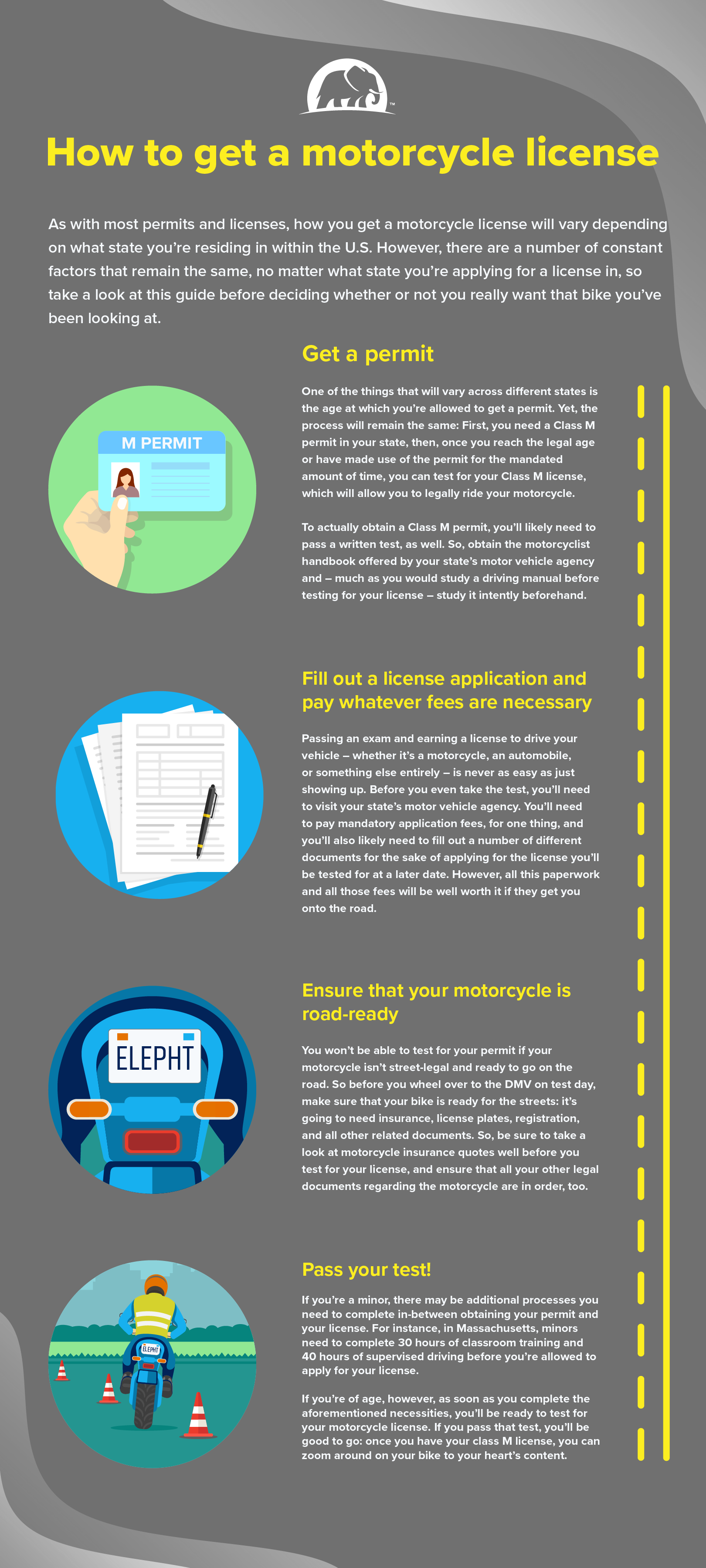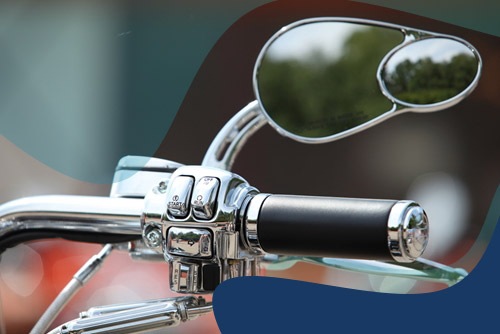Getting a motorcycle, figuring out the permits and logistics, and being informed about the risks of riding can be a daunting task. The prerequisites to get a motorcycle permit, license, or endorsement vary from state to state and the paths to get there can vary as well. Not all paths are created equal, and some are safer than others. It’s our goal to steer you down the safest path, that takes care of all the legal minutiae, and saves you a couple of bucks along the way.
Is a motorcycle right for you?
As much as we’d like to answer this question in the affirmative and have a world where everyone from your grandmother to your son is riding together in two-wheeled harmony, sadly, motorcycles are not for everyone.
Who shouldn’t ride
- If you lack self-discipline – If you find yourself overly impulsive in your decision making and giving in to the wrong but more exciting way of doing things in daily life, the difference is on a bike it can cost you your life. Riding a motorcycle is predominantly about learning proper technique and, above all else, control. If riding a motorcycle to you is about riding fast and making death-defying decisions at max speed, then you’d be better off taking the metro. Safety has to be your number one concern because you’re doing something that is inherently risky.
- If safety is your number one concern – You have to be honest with yourself when buying your first bike; this is dangerous. This is, in fact, significantly more dangerous than driving any other common vehicle for the obvious reason that you’re not encapsulated but instead exposed to both the elements, obstacles in the road, and obstacles of the road. And making a mistake on a bike may result in something much more serious than a fender bender. Is it worth the risk to you?
- If it’s not worth the risk to your family – Before buying a motorcycle, it’s important to have a sit down with your family and make sure they are okay with the financial aspect of the purchase and the risk assessment of owning a motorcycle. You are exposing yourself to superfluous danger — for some, that level of danger is acceptable but maybe not for all. It’s important to include your family in this decision because if anything were to happen to you, it would affect them.
So, you’ve assessed the risks and want to ride, but where to start?

Motorcycle safety courses
The best place to start is with a safety course. Even if you have ridden a motorcycle in the past, refreshing, reinforcing, and remembering is essential to your safety. Motorcycle courses help strengthen defensive driving skills, make you more spatially aware, and offer you the full set of tools necessary to protect yourself while on the road. The benefits don’t stop there; the completion of some courses are required by certain states, some can get you your endorsement right there as part of the course, and MSF (Motorcycle Safety Foundation) and MSC (Military Safety Course) often engender discounts on your insurance. So, not only are you safer on the road and have your endorsement in pocket when you leave, but you do so while paying less for motorcycle insurance!
What are some of the logistics one may have to go through before they can operate a motorcycle?
Getting a permit
In many states, getting a learner’s permit is required for those under the age of 19. This step is specifically for those who are underaged and do not already hold a state driver’s license.
A permit is basically legal permission to learn to operate a motorcycle. The operative phrase in the last sentence is permission to learn. You’re very much still learning and need to take this period slow, with good instruction, and supervision. On average, minors under 19 hold their permit for 9 months before taking the road test.
Getting your permit will usually include a short written test followed by limited permission to ride. After the requisite time has passed, you will then be able to take your official road test before getting your license. In case tragedy strikes and you do not pass on your first go, worry not, you will be able to take your test again, usually after a waiting period.
Onward to the license!
Remember: you are absolutely required to either hold a learner’s permit, license, or endorsement before you ever take your motorcycle onto a street. These licenses or license endorsements —whichever your state requires — come in different types.
What kind of license do I need?
That depends on the state and the type of vehicle(s) you will be riding. The DMV considers a motorcycle to be a motorized vehicle with an engine size larger than 150cc with no more than 3 wheels. The amount of types and their naming conventions can also vary by state, but basically there are up to three types of motorcycle licenses.
- M – a M class license allows operation of both two- and three-wheeled motorcycles.
- M2 is restricted to only the operation of two-wheeled motorcycles.
- M3 is restricted to only the operation of three-wheeled motorcycles.
Once you know what type of motorcycle license you’re after, you can either sign up for a motorcycle safety course that leads to an endorsement or license at the end. Now, if you already know how to ride and would prefer to take the written test and driving test, those options are also available to you. Depending on the state, you might also have to prove you own certain safety equipment or have a certain amount of driving hours logged.
Now that you’ve passed your test or completed your course and have earned either an endorsement or license, is there anything else to do before you hit the road?
There is one more check before takeoff: let’s make sure your motorcycle is road-ready.
Ensure that your motorcycle is road-ready
- Clean it – If you bought your motorcycle brand new and kept it in an extremely clean garage, you can skip this step. For the rest of humanity, you’re going to need to give the bike a good wiping down followed by a good waxing up. You can check with your manufacturer to make sure you’re using the right type of wax to provide adequate protection.
- Check for bugs – This goes hand in hand with step one, but is maybe not considered until you’ve had a traumatic bug-related motorcycle incident. Wasps can nest in exhaust pipes only to fly out enraged when you turn on your bike for the first time in a season. Spiders and other insects can make your bike their home. Don’t forget to check the inside of your helmet thoroughly, as the last thing you want is a poisonous insect crawling on your face while riding at 65 mph.
- Fresh Oil. Fresh Gas. – In the same way you need water and food, your bike needs gas and oil. And just like you prefer fresh food, so does your bike. When you leave oil and gas in a vehicle for over a season, it can cause rust to build up in the tanks and inconsistent performance out of your vehicle.
- Charge up! – Check your battery charge and make sure it is full or get it recharged before you ride. While you are at it, check the battery for corrosion and clean off any while checking for other potential leaks.
- Gear up – Make sure you’re wearing all the proper safety gear before you go for your first joy ride. Remember safety and control are your number one concerns. You’re doing something inherently risky so mitigate those risks.
One final thing: continue to be a vigilant and responsible motorcycle driver
This means proper maintenance, not getting lazy once you get comfortable riding and forgetting safety procedures, and not shooting the gap between vehicles for fun. Be responsible and enjoy, but never forget that riding a motorcycle requires discipline and control. Stay safe and ride on! And if you need motorcycle insurance, get a quote today.
Article last updated on June 25th, 2023 at 6:57 pm
